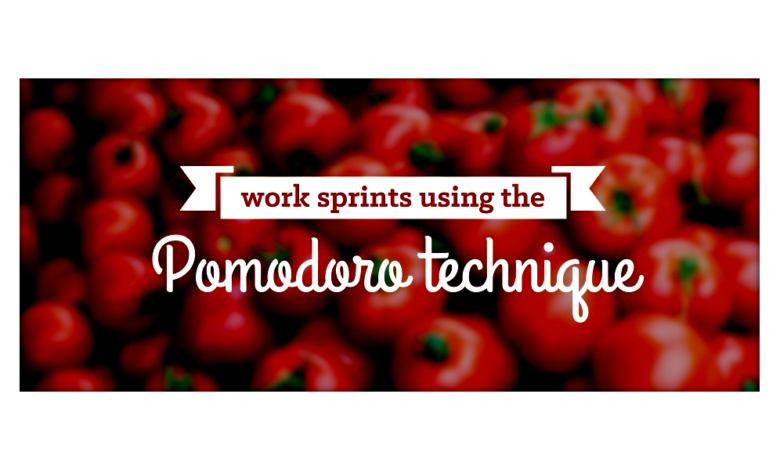The Pomodoro Technique: Boost Your Study Productivity Today
The Pomodoro Technique is a proven time management method designed to boost study productivity and enhance focus.

The Pomodoro Technique is a proven time management method designed to boost study productivity and enhance focus. Developed by Francesco Cirillo in the late 1980s, this technique uses timed intervals of work and breaks to help individuals maintain concentration and avoid burnout. Named after the tomato-shaped kitchen timer Cirillo used as a student, the Pomodoro Technique has gained widespread popularity among students, professionals, and anyone looking to improve their study efficiency.
In this article, we will explore the principles of the Pomodoro Technique, its benefits, and how to implement it effectively in your study routine. By breaking tasks into manageable intervals and incorporating regular breaks, you can overcome procrastination, maintain mental clarity, and achieve more in less time. Whether you’re preparing for exams, working on a project, or tackling a challenging task, Pomodoro Technique can help you stay on track and make the most of your study sessions.
The Pomodoro Technique
Understanding the Pomodoro Technique
This Technique is based on the idea that frequent breaks can improve mental agility and focus. The method involves dividing work into 25-minute intervals, known as “Pomodoros,” followed by a 5-minute break. After completing four Pomodoros, you take a longer break of 15-30 minutes. This structured approach helps prevent fatigue and keeps your mind fresh and engaged.
The simplicity of the Pomodoro Technique is one of its greatest strengths. All you need is a timer and a task to get started. By committing to focused work during each Pomodoro, you can minimize distractions and make steady progress. The technique also encourages self-discipline and accountability, as you track your completed Pomodoros and reflect on your study productivity.
Benefits of the Pomodoro Technique
One of the key benefits of the Pomodoro Technique is its ability to improve focus. By setting a timer for 25 minutes, you create a sense of urgency that motivates you to stay on task. This method reduces the temptation to multitask, allowing you to concentrate fully on the task at hand. Additionally, this Technique helps reduce procrastination by breaking tasks into smaller, manageable intervals. Knowing that you only need to focus for 25 minutes can make it easier to get started and overcome the initial resistance to work.
Another significant advantage is enhanced time management. This Pomodoro Technique encourages you to plan your tasks and allocate time effectively. By tracking your Pomodoros, you gain insights into how long different tasks take and can adjust your schedule accordingly. This method also prevents burnout by incorporating regular breaks, which help maintain mental clarity and energy levels throughout the day. The longer breaks after four Pomodoros provide an opportunity to recharge and reflect, ensuring sustained study efficiency.
How to Implement the Pomodoro Technique
To implement the Pomodoro Technique, start by choosing a task or project you want to work on. It could be studying for an exam, writing an essay, or completing a work assignment. Set a timer for 25 minutes and commit to focusing solely on the task during this interval. Avoid distractions and immerse yourself in the work until the timer rings. If you finish the task before the timer, use the remaining time to review or refine your work.
When the timer goes off, take a 5-minute break to relax and recharge. Stretch, grab a drink, or do something enjoyable to clear your mind. After the break, start another Pomodoro and continue working. After completing four Pomodoros, take a longer break of 15-30 minutes. This cycle of focused work and regular breaks helps maintain study productivity and prevents mental fatigue.
Tips for Maximizing the Pomodoro Technique
To maximize the effectiveness of the Pomodoro Technique, it’s essential to eliminate distractions. Create a distraction-free environment by turning off notifications, closing unnecessary tabs, and informing others that you’re working. Prioritize tasks by starting with the most important or challenging ones when your energy and focus are at their peak.
If 25-minute intervals feel too short or too long, you can adjust the duration to suit your preferences. Some people prefer 50-minute work sessions with 10-minute breaks. Using a physical timer, rather than a digital one, can create a tangible sense of time and commitment. Additionally, tracking your progress by keeping a log of completed Pomodoros can help you monitor your study efficiency and identify patterns or areas for improvement.
Common Challenges and How to Overcome Them
One common challenge when using the Pomodoro Technique is dealing with interruptions. Interruptions can disrupt your flow and reduce the effectiveness of the method. To minimize interruptions, set boundaries with others and create a dedicated workspace. Another challenge is the temptation to overwork by skipping breaks. However, breaks are essential for maintaining focus and preventing burnout. Stick to the schedule and use breaks to recharge.
Lack of motivation can also be a hurdle. If you’re struggling to stay motivated, try breaking tasks into smaller, more manageable steps. Celebrate small wins and remind yourself of the benefits of completing each Pomodoro. For complex tasks that require deep focus, consider extending the work intervals or using a modified version of the Pomodoro Technique.
Interruptions:
Interruptions can disrupt your flow and reduce the effectiveness of the Pomodoro Technique. To minimize interruptions, set boundaries with others and create a dedicated workspace.
Overworking:
Some individuals may be tempted to skip breaks to get more done. However, breaks are essential for maintaining focus and preventing burnout. Stick to the schedule and use breaks to recharge.
Lack of Motivation:
If you’re struggling to stay motivated, try breaking tasks into smaller, more manageable steps. Celebrate small wins and remind yourself of the benefits of completing each Pomodoro.
Task Complexity:
For complex tasks that require deep focus, consider extending the work intervals or using a modified version of the Pomodoro Technique.
Read More: The Best Note Taking Techniques for Better Retention
Conclusion
The Pomodoro Technique is a simple yet effective method for boosting study productivity and improving focus. By breaking tasks into timed intervals and incorporating regular breaks, you can overcome procrastination, maintain mental clarity, and achieve more in less time. Whether you’re a student, professional, or lifelong learner, this technique can help you stay on track and make the most of your study sessions.
In a world filled with distractions and competing demands, the Pomodoro Technique offers a structured approach to time management and productivity. By committing to focused work and taking intentional breaks, you can enhance your efficiency, reduce stress, and achieve your goals with greater ease. Give the Pomodoro Technique a try today and experience the transformative power of working smarter, not harder.
FAQs
What is the Pomodoro Technique?
The Pomodoro Technique is a time management method that involves working in 25-minute intervals (Pomodoros) followed by short breaks to improve focus and study productivity.
How long should a Pomodoro be?
A standard Pomodoro is 25 minutes, but you can adjust the duration based on your preferences and the nature of the task.
Can the Pomodoro Technique help with procrastination?
Yes, by breaking tasks into smaller intervals, the Pomodoro Technique makes them less overwhelming and easier to start, reducing procrastination.
What should I do during breaks?
Use breaks to relax, stretch, hydrate, or do something enjoyable to recharge your mind and body.
Can I use the Pomodoro Technique for all tasks?
While Pomodoro Technique is versatile, it may need to be adapted for tasks that require extended periods of deep focus or creativity.







